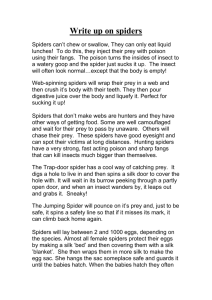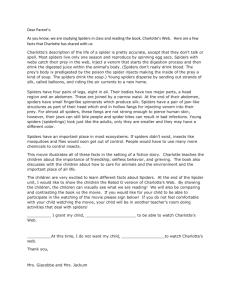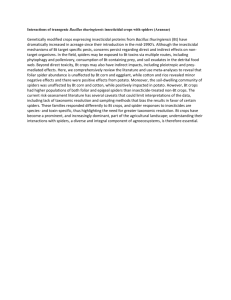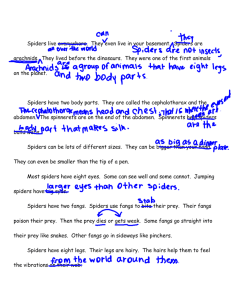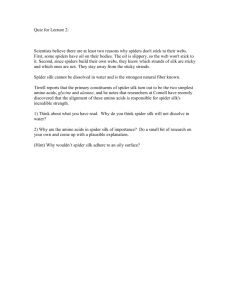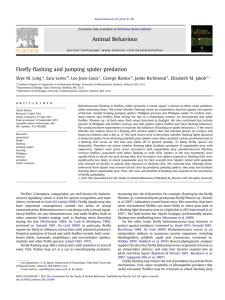Spider Prey Capture Activity
advertisement
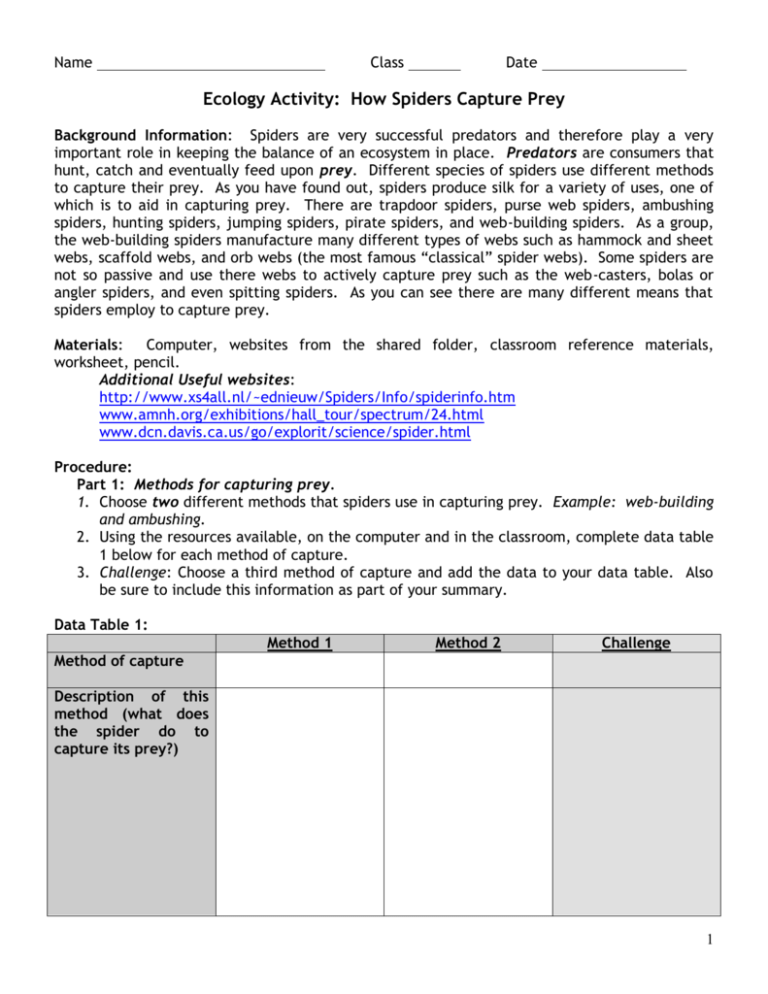
Name Class Date Ecology Activity: How Spiders Capture Prey Background Information: Spiders are very successful predators and therefore play a very important role in keeping the balance of an ecosystem in place. Predators are consumers that hunt, catch and eventually feed upon prey. Different species of spiders use different methods to capture their prey. As you have found out, spiders produce silk for a variety of uses, one of which is to aid in capturing prey. There are trapdoor spiders, purse web spiders, ambushing spiders, hunting spiders, jumping spiders, pirate spiders, and web-building spiders. As a group, the web-building spiders manufacture many different types of webs such as hammock and sheet webs, scaffold webs, and orb webs (the most famous “classical” spider webs). Some spiders are not so passive and use there webs to actively capture prey such as the web-casters, bolas or angler spiders, and even spitting spiders. As you can see there are many different means that spiders employ to capture prey. Materials: Computer, websites from the shared folder, classroom reference materials, worksheet, pencil. Additional Useful websites: http://www.xs4all.nl/~ednieuw/Spiders/Info/spiderinfo.htm www.amnh.org/exhibitions/hall_tour/spectrum/24.html www.dcn.davis.ca.us/go/explorit/science/spider.html Procedure: Part 1: Methods for capturing prey. 1. Choose two different methods that spiders use in capturing prey. Example: web-building and ambushing. 2. Using the resources available, on the computer and in the classroom, complete data table 1 below for each method of capture. 3. Challenge: Choose a third method of capture and add the data to your data table. Also be sure to include this information as part of your summary. Data Table 1: Method 1 Method 2 Challenge Method of capture Description of this method (what does the spider do to capture its prey?) 1 Common name of a spider that uses this method Genus name Species name Intended prey Common name of another spider that uses this method Genus name Species name Intended Prey Where outdoors would you look for spiders using this method? Is this method considered active or passive? Advantages of this method Disadvantages of this method 1. 2. 3. 4. Part 2: Comparison of web types Choose two different types of webs used by web-building spiders. Complete data table 2 Draw each web type (bonus for including resident spiders in their correct position). Challenge: Choose a third web type and add the data to your data table. Also be sure to draw this web and include this information as part of your summary. 2 Web Type 1 Web Type 2 Challenge Type of web Description of this web appearance (what does the web look like?) Where outdoors would you look for this type of web? Approximate size of web Common name of a spider that uses this method Genus name Species name Advantages of this web type Disadvantages of this web type Detailed drawing of this type of web 3 Conclusion Questions: Applying Your Knowledge 1. If you were about to be changed into a spider of your choice what type of spider would you choose to be, and why? (Be sure to discuss your method of capture and use of silk). 2. What was the most interesting thing you found out during this activity, and why do you find this interesting? Summary: Write a three paragraph summary of this activity using our standard format (what you were doing and why you were doing it, what you found out, how this information relates to life.) 4
